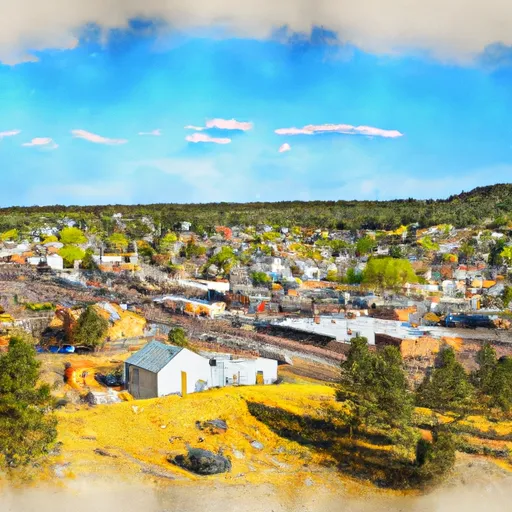-
 Snoflo Premium
Snoflo Premium
Get unlimited access to all our content
With no Ad interruptions! - Start Your Free Trial Login with existing account
Williams
Eden Index
Climate
9.3
•
Recreation
2.4
•
Community
•
Safeguard
4.6/10

Williams, Arizona is a small town located in Coconino County, approximately 60 miles south of the Grand Canyon. The town enjoys a mild climate with four distinct seasons. Summers are warm, with average temperatures ranging from the upper 70s to low 80s Fahrenheit, while winters can be chilly, with average temperatures ranging from the mid-30s to low 40s Fahrenheit. Precipitation is relatively low, with an average annual rainfall of around 22 inches.
Williams is known for its proximity to beautiful natural landscapes and outdoor recreation opportunities. The town is surrounded by the Kaibab National Forest, providing ample opportunities for hiking, camping, and wildlife viewing. The nearby Bill Williams Mountain offers hiking trails and stunning views of the surrounding area. The Cataract Lake Recreation Area is a popular spot for fishing, boating, and picnicking.
Regarding hydrology, Williams is located near the headwaters of the Colorado River system. The town is supplied with water from local wells, which tap into the Coconino Sandstone aquifer. The aquifer is replenished mainly by precipitation and snowmelt, ensuring a sustainable water supply for the community.
Overall, Williams, Arizona offers a pleasant climate, access to natural beauty, and various outdoor recreation opportunities for residents and visitors to enjoy.
What is the Eden Index?
The Snoflo Eden Index serves as a comprehensive rating system for regions, evaluating their desirability through a holistic assessment of climate health, outdoor recreation opportunities, and natural disaster risk, acknowledging the profound impact of these factors on livability and well-being.
Climate Health Indicator (CHI): 9.3
Williams receives approximately
425mm of rain per year,
with humidity levels near 64%
and air temperatures averaging around
11°C.
Williams has a plant hardyness factor of
6, meaning
plants and agriculture in this region thrive during a short period during spring and early summer. Most
plants will die off during the colder winter months.
By considering the ideal temperature range, reliable water supplies, clean air, and stable seasonal rain or snowpacks, the Climate Health Indicator (CHI) underscores the significance of a healthy climate as the foundation for quality living.
A healthy climate is paramount for ensuring a high quality of life and livability in a region, fostering both physical well-being and environmental harmony. This can be characterized by ideal temperatures, reliable access to water supplies, clean air, and consistent seasonal rain or snowpacks.
Weather Forecast
Streamflow Conditions
Lower Colorado-Lake Mead
Area Rivers
Lower Colorado-Lake Mead
Snowpack Depths
Lower Colorado-Lake Mead
Reservoir Storage Capacity
Lower Colorado-Lake Mead
Groundwater Levels
Recreational Opportunity Index (ROI): 2.4
The Recreational Opportunity Index (ROI) recognizes the value of outdoor recreational options, such as parks, hiking trails, camping sites, and fishing spots, while acknowledging that climate plays a pivotal role in ensuring the comfort and consistency of these experiences.
Access to outdoor recreational opportunities, encompassing activities such as parks, hiking, camping, and fishing, is crucial for overall well-being, and the climate plays a pivotal role in enabling and enhancing these experiences, ensuring that individuals can engage in nature-based activities comfortably and consistently.
Camping Areas
| Campground | Campsites | Reservations | Toilets | Showers | Elevation |
|---|---|---|---|---|---|
| Kaibab Lake | 63 | 6,802 ft | |||
| TenX | 70 | 6,656 ft | |||
| Dogtown Lake | 54 | 7,058 ft |
Nearby Fishing
Catastrophe Safeguard Index (CSI):
The Catastrophe Safeguard Index (CSI) recognizes that natural disaster risk, encompassing floods, fires, hurricanes, and tornadoes, can drastically affect safety and the overall appeal of an area.
The level of natural disaster risk in a region significantly affects safety and the overall livability, with climate change amplifying these risks by potentially increasing the frequency and intensity of events like floods, fires, hurricanes, and tornadoes, thereby posing substantial challenges to community resilience and well-being.
Community Resilience Indicator (CRI):
The Community Resilience Indicator (CRI) recognizes that education, healthcare, and socioeconomics are crucial to the well-being of a region. The CRI acknowledges the profound impact of these elements on residents' overall quality of life. By evaluating educational resources, healthcare accessibility, and economic inclusivity, the index captures the essential aspects that contribute to a thriving community, fostering resident satisfaction, equity, and social cohesion.

